
Healthcare providers who want to expedite patient billing, insurance claims, and revenue management must first develop medical billing software. This blog, perfect for both novice and experienced developers in the healthcare software sector, describes the procedures, key components, technical specifications, and tactics to create medical billing software. By developing a strong solution, you will meet the fundamental requirements of clinics, hospitals, and independent practices, boosting productivity and guaranteeing adherence to healthcare laws.
Contents Table
- An overview of the development of medical billing software
- Important Procedures for Creating Medical Billing Software
- Essential Elements of Medical Billing Software
- The technical stack and required tools
- Difficulties in developing medical billing software
- Considerations for Security and Compliance
- Models for pricing and cost estimation
- Promoting Your Software for Medical Billing
An Overview of the Development of Medical Billing Software
Developing medical billing software entails creating a system that streamlines healthcare providers' billing procedures, enhances patient care, and lowers human error. You may make sure the software is both user-friendly and complies with international standards by collaborating with an experienced Indian Medical App Development Services company in India or an app development company India.
Important Procedures for Creating Medical Billing Software
Step 1: Perform Market Analysis
- Examine the demands of the healthcare sector.
- Determine the main participants and rivals.
- Examine consumer pain points and demand patterns.
Step 2: Specify the Features and Scope of the Project
- Enumerate every feature, both basic and sophisticated.
- Indicate the requirements for compliance (HIPAA, ICD-10, etc.).
- Determine the intended user personas, such as billing employees and healthcare providers.
Step 3: Select a Technology Partner
- Choose a reputable Indian app development business with experience in the medical field.
- Select a group that specializes in developing online and mobile applications.
Step 4: Create the Software Design and Development
- Make prototypes and wireframes to get feedback.
- Create both frontend and backend features.
- Future improvements should incorporate scalability.
Step 5: Examine and Start
- Test extensively for usability, security, and compliance.
- Test the app on a limited number of users.
- Launch to a wider audience after integrating input.
Crucial Elements of Software for Medical Billing
| Feature | Description |
|---|---|
| Patient Registration | Saves patient information and automates the patient intake procedure. |
| Appointment Scheduling | Simplifies reminders and appointment scheduling. |
| Invoicing and Billing | Creates precise bills, automates billing procedures, and keeps track of payments. |
| Processing of Insurance Claims | Decreases error rates and expedites the filing of claims. |
| Management of the Revenue Cycle | Keeps track of every step of the billing process, from the initial appointment to the last payment. |
| Analytics and Reporting | Creates reports on the performance of the billing cycle, revenue, and unpaid invoices. |
| Security and Compliance | It provides robust data security and ensures compliance with healthcare regulations. |
Technical Stack and Required Tools
The required databases are MySQL, PostgreSQL, or MongoDB for safe patient data storage, and the back-end development languages are Python, Java, or Node.js for high performance and scalability.
- Front-End Frameworks: React or Angular for a responsive user interface.
- Mobile: For cross-platform functionality when including mobile features, use React Native.
- Insurance API Integration: Makes processing insurance claims easier.
- Payment APIs: Include safe gateways for payments.
- Security Encryption: For data in transit, use end-to-end encryption (SSL/TLS).
- Authentication: For a secure login, use JWT or OAuth.
Difficulties in the Development of Medical Billing Software
| Challenge | Solution |
|---|---|
| Implementing Security Measures | Implement user roles, multi-factor authentication, and encryption. |
| Adherence to Regulations | Ensure HIPAA and GDPR compliance for data security. |
| Interoperability | Create APIs to integrate with current medical systems. |
| Complex User Needs | Conduct user interviews and testing to ensure an intuitive user experience. |
| Scalability | Opt for cloud-based infrastructure to accommodate growing data needs. |
Considerations for Security and Compliance
Best Practices for Data Security
- Encrypt data while it's at rest and in transit.
- To limit access to sensitive data, use role-based access restrictions.
- To guarantee data backup and recovery, use a cloud-based storage option that is secure.
Standards for Compliance to Adhere to
- HIPAA: Ensures patient privacy and security in the U.S.
- GDPR: Protects patient data privacy in the EU.
- ICD-10: Standardizes diagnosis codes for insurance claims.
Models for Pricing and Cost Estimation
| Pricing Model | Description |
|---|---|
| Hourly Rate | Charged based on hours spent on development. |
| Fixed Cost | Set amount agreed upon at the start of the project for well-defined scopes. |
| Subscription-Based | Monthly or yearly charges for SaaS versions of the software. |
| Pay-per-Use | Charges based on the number of claims processed or users per month. |
Successful Marketing Techniques for Medical Billing Software
- Develop a Professional Website: Showcase your features, testimonials, and benefits.
- Content Marketing: Create blog posts and case studies on medical billing challenges and solutions.
- Collaborate with Healthcare Associations: Build credibility by partnering with healthcare organizations.
- SEO Optimization: Use keywords like “app development company India” and “mobile app development company India” for better visibility.
We to code. It's our passion
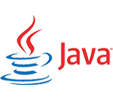


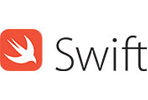
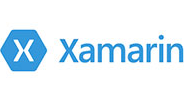
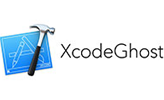

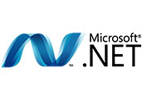
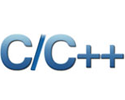

you can also reach us at our given
email address or phone number.




